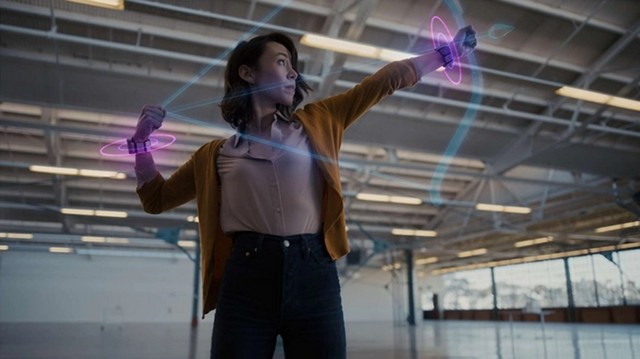Aside from developing a Clubhouse-clone and an Instagram for youngsters, Facebook is also developing AR-based products at its Facebook Reality Labs site. We've already heard that Facebook is collaborating with Ray-Ban to create an AR Glass. Facebook Reality Labs (FRL) researchers have developed a new wrist-based AI technology that allows users to engage with AR-based computer interfaces in the real world.
For quite some time, the business has been working on Human-Computer Interaction (HCI) technology. Facebook just revealed its 10-year vision for a contextually aware, AI-powered UI for its forthcoming AR glasses. However, Facebook claims that it will take a long time to build such technology into a market standard.
As a result, the firm recently revealed a scaled-back version of the technology, which uses a wrist-based device to interact with AR interfaces in the real world. The FRL's wearable wristband uses electromyography (EMG) technology to convert electrical motor nerve impulses into computer instructions.
As a result, the gadget employs several inbuilt sensors to detect motor nerve signals traveling from the brain to the user's hand. Now, because it is worn on the wrist, it can interpret a specific motor nerve signal before it reaches the user's fingers. As a result, the gadget can respond to millimeter-level finger motions. Furthermore, Facebook claims that in the future, the gadget may be able to predict a movement and take the appropriate response.
According to the firm, the technology would initially allow rudimentary pinch and tapping motions of the fingers. However, with future advancements, EMG technology may be able to enable richer controls in AR interfaces. According to Facebook, users will be able to touch and manipulate virtual items and UIs in the future, similar to how Iron Man does in the Avengers movies.
Aside from the ultra-low-friction finger-based input, the business is now developing a feedback system for the new HCI technology. This will feature enhanced haptic reactions that will allow users to "feel" the virtual user interfaces and objects. Facebook demonstrated a user taking a virtual bow and arrow and nocking the arrow onto the bow. Through the system's sophisticated vibration-based feedback, the user was able to experience the sense and strain of drawing the arrow.
As a result, the potential for this technology is endless, and Facebook wants to further improve it in the future. Furthermore, Facebook announced that it will “address some innovative work in soft robotics to make comfortable, all-day wearable gadgets and provide an update on [its] haptic glove research” later this year.
Pathakji...


Post a Comment